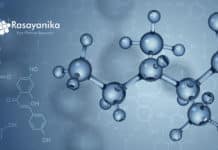Automating the construction of three-dimensional structures in the size range of 10’s of millimeters would revolutionize manufacturing for optical, electrical, and biomedical applications. To achieve this, an economical approach is to enable the constituent parts to spontaneously come together and build the structures themselves. However, driving micron to mesoscale components (approximately between 0.1 to 100 millimeters) to align and dynamically assemble into desired structures remains a challenging goal.
Researchers in chemical engineering at the University of Pittsburgh Swanson School of Engineering have made significant progress in designing self-aligning structures using fluid mechanics, chemo-mechanical processes, and a little stickiness. Their research, titled “Engineering confined fluids to autonomously assemble hierarchical 3D structures,” has been published in PNAS Nexus, with Oleg E. Shklyaev as the lead author, working with Anna Balazs, Distinguished Professor of Chemical and Petroleum Engineering and the John A. Swanson Chair of Engineering, along with former post-doc Abhrajit Laskar.
The system designed by Shklyaev employs two-dimensional polymeric sheets, with one heavier sheet serving as the foundation or base, and lighter sheets as the construction panels. Sticky bonds are strategically placed on the sheets to act as hinges, similar to DNA molecule bonds (A, C, G, T) that fit precisely together
.The assembly process starts with dropping the panels into a solution, where they sink randomly in the tank. The addition of a reactant triggers a catalytic reaction, generating fluid flows with both vertical and horizontal velocities along the confining walls. The horizontal flow brings the sheets together along the chamber floor, and the sticky bonds connect the appropriate panels to the base. Then, the vertical flow lifts the sides of the structure into an upright position, with the sticky bonds completing the assembly.
Shklyaev explained that the conversion of chemical energy released from the catalytic reaction into mechanical action (fluid flow) is an inherent property of the system. The gradients produced in the flow, due to the catalytic reaction, create forces that act on the fluid and initiate the flow. This flow acts as “helping hands” to assemble the structure.
Through engineering the spatially and temporally varying patterns in the flow, researchers can tailor the work done by these “helping hands,” leading to the construction of regular tetrahedrons, cubes, or similar structures. Notably, the “sticky” bonds on the panels can involve DNA strands, leveraging their complementarity to enable highly selective and precise bonding to specific regions.
Overall, this research represents a significant step towards autonomous assembly of complex 3D microstructures, offering promising possibilities for various applications in the fields of optics, electronics, and medicine.
Spontaneous 3D Object Spontaneous 3D Object Looking for latest chemistry and Pharma job openings, follow Rasayanika Facebook and Telegram and subscribe to our youtube channel for the latest updates on chemistry and Pharma job
















































